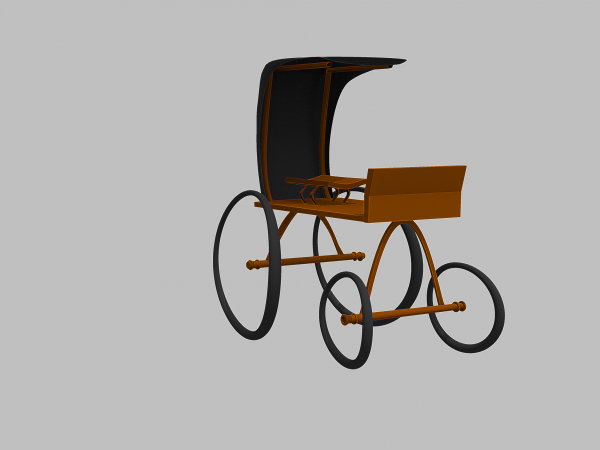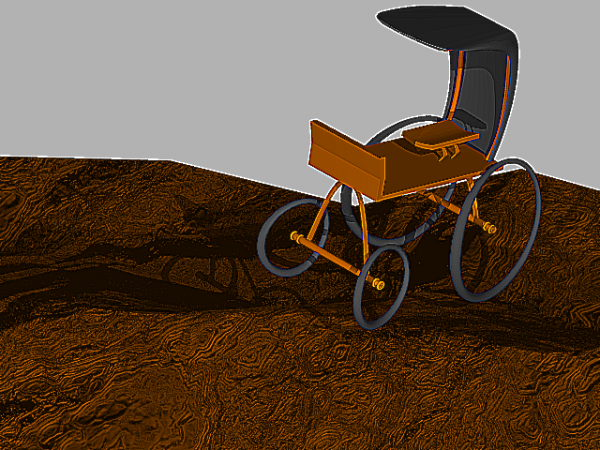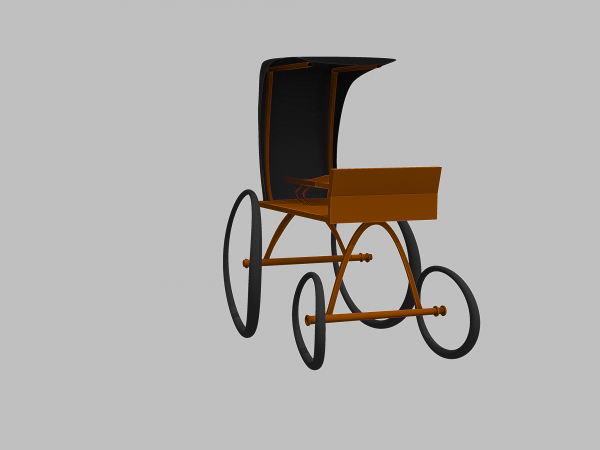-
Posts
21,630 -
Joined
-
Last visited
-
Days Won
114
Content Type
Profiles
Forums
Events
Everything posted by Rodney
-
Great stuff! Kids rule.
-
Names are a fascinating subject... so personal and yet... not. If anyone calls me anything other than Rodney I automatically assume they don't know me and a little warning signal goes off in my brain that suggests I should pay closer attention to who is addressing me. Shhhh... this is a secret so don't tell anyone. On the other hand, if someone addresses me as Rodney I just assume they know my name, are addressing me specifically and press on. As for addressing other folks in the forum I'll generally use what is directly seen in a profile (under the avatar) unless they are routinely addressed by another name which has been used by others or appears to be preferred. The example here would suggest that Dan prefers to be called Dan and Douglas prefers Douglas because those are the name they provided in their profile. I figure it's hard to take someone to task for addressing someone by a name you've adopted yourself. I have to chuckle a little every time someone calls Matt (Campbell) by the name John due to the association with his forum username (John Bigboote). He takes it all in stride and hasn't ever corrected anyone so I must assume he is fine with being called John.
-
While they are a bit dated the Pixar textures are still very useful.. I've converted some of the Pixar textures from TIF to PNG and since they are under creative commons license plan to upload them. I just have to do my due diligence to include the licensing info. What's particularly nice is that they have bump and normal maps that come with them. I know what you are talking about with regard to rigging. I recently was all excited to rig a character only to be reminded that I still had a lot of work to do with smartskinning etc. before it could actually be animated. The last rig I installed was Holmes Bryant's Lite Rig and I hope to run through all the various rigs in the not too far flung future as I really need to get a good handle on rigging.
-
You've done a great job on that last one Dan. At a quick glance it looked like you might have used a photo for the background. As Steve mentions much of that can be attributed to the details and I'd say the lighting is a major part as well. And the glass on the windows... oh, yeah, that's looking good. Nice job! Annie is the one part of the image that lacks something but I"d say only in that her pose is completely symmetrical and it's really hard to get complete symmetry in reality even with things we consider symmetrical. Annie herself looks realistic enough though! I really like the textures you've used (the brick on the left wall makes me wonder if you've used the brick textures that Pixar recently released. If you are interested in endless tweaking I'd say the ceiling tiles could be a bit more dense (i.e. more of them). I don't know what the size of ceiling tile might have been in that time period but I'd guess at least two thirds of their present size? With some noticeable trim to hold them up in place. I suppose it goes without saying, the closer you get to realism the more you'll get folks suggesting endless preferences for minute details.
-
Yessir!
-
I just checked and you need to have OpenGL3 turned on the Global tab of Tools/Options for the GPU Posteffects to show up. With OpenGL set the option won't show (or at least not here on my computer).
-
These all appeared with the release of v18 (no increment). From the change log: Rendersetting "Screen Space Ambiant Occlusion" This is a posteffect, which is implemented as a GPU Shader, but has also a CPU fallback implementation, for the case that the gpu doesn't support this or opengl3 is not used. The effects also need the depth buffer, if they are not enabled, the effect enables it. additional settings On OSX this effect can be computed only on the cpu, due to glTexBuffer and samplerBuffer (gsls) isn't avaible in the compatibility profile, the core profile can't be used (nor supported via AGL) there. "SSAO Effect only" Only the computed SSAO is shown as a greyscale picture (not applied to the original render, overwrite it) "Samples" How many samples are used to compute the ssao around each pixel, available values,when gpu is used are 2-1024, if the cpu is used it is limited to 2-128 (higher values are clamped to 128) it's also a good idea to enable OpenMP, when the fallback to the cpu implementation is used. "Radius" The radius around each pixel, from which the SSAO is computed "Distance" Distance which occlusion reaches "Gamma" Gamma correction for occlusion only "Density" Density for sampling "Softness" Softness of the edge of occlusion "Luminance influence" How much luminance affects occlusion (gpu only, and only when applied to finalrender) "Blur the effect" Enables blurring for the effect itself (not the applied effect) "Radius" The radius for which the blur is calculated (gpu gaussian blur used) "Apply to finalrender" See GPU Postprocess effects when "GPU Postprocess effects" is set to ON and "Applying each pass" is ON and the gpu implementation is used the effect is applied each pass. Rendersetting "GPU Postprocess effects" (only OpenGL3, driver version 3.2 or higher is needed) This implements some posteffects as GPU calculated effects, they are faster than the normal posteffects applied to the camera. An additional logfile (GPUShader.log in the A:M installation directory) is created, when such aa effect is used (for bughunting) if an error occurs, the master.log is also needed for bughunting the order for computing the posteffects is SSAO, Blur, Different Posteffects. Settings for each gpu posteffect "Applying each pass" When You render with multipass ON, the effect is applied at each pass. "Apply to finalresult" If this setting is OFF, the result from the posteffect is saved as a seperate image file (also for every pass in multipass), and not added to the final result image. The imagefile is saved in the directory where the final image is stored and appended with the posteffect name and pass number. "Samples" How often the posteffect is applied. Blur Additional setting, "Radius" which controls the radius for which the blur posteffect is calculated Different Posteffects additional setting "Posteffect Type" Available types are "Greyscale" "Sepia tone" "Negative" "Sharpen" "Dilate" "Erode" "Laplacian" "Prewitt" "Sobel"
-
Exactly why I posted this... I haven't seen evidence of folks using the GPU post effects so I assume most must not know about them. They are located at the very bottom of the Render Panel. For those that struggled with the Blur results of standard Post Effects you will struggle no more. Toggling off the 'Apply to final results' option will have A:M render the effect out separately for later compositing (Disclaimer: I haven't played with that much)
-
I was thinking more long term and in perpetuity... establishing a framework for continuing contests rather than a one off contest where we'll end up going through the same process later... but sure, if you want to start a contest... have at it. My concern is that where there is no framework for contests... um... er... there is no framework for contests. Are you looking to be 'the contest guy' or just planning to run this one contest? I ask because a confirmation of the former would allow everyone to point at you and say... talk to that guy. .
-
I can't do much with this one as it's currently available only on the Mac and Linux platforms but perhaps of interest to some folks... http://bufsoftware.com/ Specifically, they have just released Bview which can be used to compare, color correct and annotate video among other things. This software (Bview) is the first release of an entire suite of software being retooled and offered to the public after VFX production house Rhythm and Hues went bankrupt.
-
I'm liking how the sharpen effect adds a little additional beveling... It might be wise for me to turn off shadows for the main pass so that the sharpen effect doesn't sharpen those.
-
I've been enjoying some of the newer GPU post effects and I hope folks have been pressing into those. These are a few renders using the Sharpen effect from testing some alternative 'toon' looks (without using toon).
-
I like the idea of modeling insects. (Ludo could even model one as Thor) Here's the real underlying question though... how do we get from talking about having these contests and actually having them. We need a system that launches these things quickly so people can get busy and join in. So a related question might be, 'does it have to be a contest?' Can someone just post a topic and say, "Have at thee foul foe.. I will now model an insect and I know for a fact you shall not model one better than me!" (Say that in a Marcos (Xtaz) Rezende winner take all voice!) Contests do have some things attached to them that typical challenges do not... prizes for instance. Bragging rights. Fame. Immortality. Perhaps winners of topic challenges could be eligible for later/formal voting? Perhaps the winners of the challenges could be determined by a simple forum poll? How can we make this work?
-

Barry Zundel's A:M Tutorials now available free on his website!
Rodney replied to TheToadStool's topic in Animation:Master
It's all download now. Although I suppose the download could be copied onto a CD. I'm not sure how Hash Inc distros to schools so you might want to check directly with them. The way I parse it it's all subscription... one lasts forever (sans updates after the first year) and the other lasts for a calendar year. -
Crazy stuff Nancy! Fascinating styles! Just when I start to think 'that one is my favorite' I see something in another to like even more. (Right now I'm keen on that last one but that's because it's the last one I looked at)
-
Yes, 'Steamboat Willie' was the third in the series after 'Plane Crazy' and 'The Barn Dance' and it should be noted that they would have appeared with the live theater orchestration available in each theater in those days. It's important to remember that 'silent film' was rarely silent as it was accompanied by live orchestration and I'm sure some 'performances' were better than others. The part that Disney (and competitors) were latching onto was that the audience would enjoy their product more if sound and film could be better served together. Another 'witness' to the chronology would be Carl Stalling who joined Disney in 1929 (after 'Steamboat WIllie') and immediately went to work putting sound into Disney's shorts *and* the product of Walt and Carl's consideration of whether the animation (drawings) or the music should come first. 'Silly Symphonies' was an example of the latter where music predominated while the Mickey Mouse shorts focused on imagery first. Of interest, the Silly Symphonies prompted new tools for animation such as 'bar sheets' while the shorts helped transform the artwork used identify site gags into full fledged storyboards. These new tools were needed badly because the success Disney suddenly found himself enjoying was driving exponential growth. The biggest obstacle Disney appears to have faced at the time was his 'partners' who thought they could have the same success without Walt. In the next year after 'Steamboat Willie' his partners would move on leaving only 'Walt Disney' in the playbill credits. Mintz, Powers, Iwerks... most folks won't recognize those names but folks certainly recognize 'Disney'. For those more into classic Warner Brothers cartoons than Disney it is worth noting that Carl Stalling was a major contributor there too. I don't know how accurate it is but 'Steamboat Willie' is said to have been in production from July to September of 1928 at a budget of just short of $5,000. That is said to be roughly the equivalent of $70K in today's dollars.
-
Don't be too quick to give those away... you may want to use A:M with Blender later. Nemyax even created a handy export program to get models out of Blender into A:M (into A:M's format that is). Sleep well.
-
You are going to love A:M! Welcome aboard. There are some pdf files you'll want to keep handy The first is 'The Art of Animation:Master' that takes you through a series of tutorials. The second is a technical reference for when you want to dive deeper into technical settings. Both are located here: http://www.hash.com/training-13-en I would recommend diving into some of the many videos that are available. For instance there are videos that accompany 'The Art of Animation:Master' manual. Those are very basic but will get you up to speed quickly. My recommendation would be to run through those quickly and if you get stuck ask question here in the forum. This forum is the best way to get your questions answered and folks often make custom videos addressing your specific needs too. There are a lot of additional videos demonstrating use of A:M. Just point out the specific area of specific interest and away you go. I know very little about exporting to external renderers... although I have used Renderman etc. in tests with .OBJ exports. A:M's renderer is more than adequate for most of my work. A:M comes with Netrender which we can use to launch and render projects in the background. I use that on larger projects. I have other recommendations for you as a 2D guy but will save those for later so you can focus on getting up to speed with A:M. There are a ton of free applications you can use with A:M but I can think of only one that I think you absolutely need. My number one suggestion would be BlackMagic Fusion which is an external node based compositor... $900 for studio version... standard program... free. I've found it to be a near perfect fit with A:M. But save that for a rainy day and concentrate on A:M.
-
Keeping nine year old software rather than spend $79 to get the current release of A:M? You were doing okay until that suggestion Nemyax. It's amazing what people will do to make their lives harder. When moving into Blender one question that might need to be answered is, "are you a programmer?" If the answer to that question is 'yes' then a focus on blender might make more sense.
-
Hey stéphane, Welcome to the forum! I'll take a stab at answering. (I've tried to use Blender on occassion. I'd really like to use it to augment A:M but it's just too painful. I'm sure that has a lot to do with 'first learned best remembered'. Blender is getting better though. Recommendation: since Blender is free use both A:M and Blender as needed.) Yes and no. It might as well be a yes though because with A:M you'll want to use splines. Some people don't but I don't envy them. Yes, .LWO, .OBJ, .3DS, .X and some other formats which I forget. Via the formats mentioned above yes. I'm not aware of other renderers that natively render A:M's file formats. Most definitely. Although the user interface is mostly the same. I'm attaching a change log if you want to see the major changes that have occurred since v13. There are other changes not recorded in the change log such as better integration of some plugins and external plugins aren't included at all. For instance most of the importers/exporters have all been updated since v12 because of a major change in A:M's file formatting to bring it more in line with XML. A lot of third party plugins released won't be in the change log either and the majority of those are free. Pull up a chair and make yourself comfortable. change log.txt
-
Nicely done Dan! I've tended to prefer image based hair over particle hair although I use hair/particles a lot these days (mostly for cartoony hair) and I now tend to run a test first to see if it'll be the best approach for that situation. I absolutely need to be using 64bit to get at that extra memory though if I even entertain the idea of particle hair. Each has it's place and this (Dan's example) is a great one for image based hair.
-

Recent work marrying CGI with live action TV spots
Rodney replied to John Bigboote's topic in Showcase
I thought that was a different client. -

Recent work marrying CGI with live action TV spots
Rodney replied to John Bigboote's topic in Showcase
Nicely done Matt! -
Hmmm... it seem to be working with your transparency map here for both decals and patch images. Perhaps it's related to your hair image? test.mov
-
Yes, but how to avoid that? I'm somewhat answering my own question here by trying out some things to force a different workflow.














